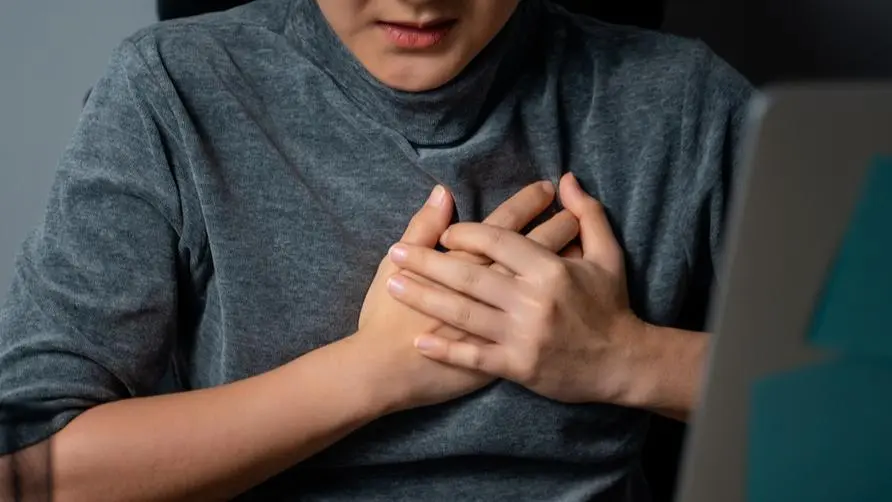Low temperature increases cardiovascular "excess deaths"! Understand the 5 key points of protecting the heart at once

Is the freezing cold snap “deathly”? Low temperature increases mortality by 9.1 per 1,000 people
The cold wave is forcing the temperature to break through the bottom, and it will really be “cold to death”! A recent study published in the American Heart Association’s “Circulation” pointed out that extreme weather can increase the risk of death from cardiovascular disease. The study pointed out that for every 100 people with cardiovascular disease, 1 will die from ischemic heart disease, stroke, heart failure, arrhythmia and other diseases, and that days with extreme temperatures (coldest/hottest) are more likely to increase the risk of cardiovascular disease. Excess deaths from vascular events.
Study author Barrak Alahmad, an environmental health researcher at Harvard’s TH CHAN School of Public Health, pointed out that the effects of cardiovascular disease can be divided into personal risk factors and environmental risk factors. Personal risk factors include lack of exercise, type 2 diabetes, high blood pressure, and smoking. In times of extreme climate, environmental factors such as temperature changes are a major challenge in preventing cardiovascular disease.
The study analyzed 32 million cardiovascular disease deaths in 27 countries over the past 40 years, and examined whether the coldest/warmest days affected mortality. The mortality rate increased by 2.2 per 1,000 on the hottest days (the nine hottest days of the year); the mortality rate increased by 9.1 per 1,000 on the coldest days (the coldest nine days of the year).
The study also pointed out that most “excess” cardiovascular deaths occur in patients with heart failure. In the hottest weather, the mortality rate increases by 2.6 per 1,000, and in the coldest weather, the mortality rate increases by 12.8 per 1,000. Relevant experts commented that an early warning system to prevent sudden cardiovascular disease should be designed for high-risk groups that are susceptible to the effects of temperature, and prevention recommendations for vulnerable groups should be issued to reduce cardiovascular deaths during extreme temperatures.
How does hypothermia protect cardiovascular systems? AHA reminds five key points
In extreme climates, drastic changes in temperature may cause rapid contraction and expansion of cardiovascular systems, leading to stroke, myocardial infarction and even heart failure. The American Heart Association has put forward recommended measures to protect cardiovascular health when the cold snap comes.
Safe exercise: Winter exercise can increase caloric consumption and increase positive emotions. However, you should pay attention to wearing enough warm clothes during outdoor exercise to avoid hypothermia, and pay attention to getting enough rest. People with a history of cardiovascular disease should consult their primary care physician or family physician before undertaking an exercise program.
Replenish water: When the weather is cold, the human body is less likely to feel thirsty and is prone to lack of water, which increases the chance of dehydration. Especially during winter exercise, it is necessary to maintain water replenishment to reduce the risk of excessive blood viscosity.
Pay attention to calories: When the cold snap comes, many people like to drink hot drinks such as hot chocolate and caramel macchiato. These sugary drinks contain excess calories, sugar and fat, which can easily increase the burden on cardiovascular health.
Get vaccinated: People with cardiovascular disease are at high risk of infectious diseases such as the new coronavirus and influenza virus. They must follow the recommendations of health authorities and receive the new coronavirus vaccine, influenza vaccine, and pneumococcal vaccine.
Learn first aid: Low temperature can easily induce cardiovascular events such as arrhythmia. Performing cardiopulmonary resuscitation immediately when the heart stops has a chance of increasing survival by 1-3 times. It is recommended that groups with high cardiovascular risk and the general public should learn correct techniques. First aid can help save more lives.
The key to maintaining healthy cholesterol is regular exercise and eating less saturated fatty acids.
In addition to paying attention to keeping warm at low temperatures, individuals should develop correct living habits to reduce the risk of cardiovascular disease. Quitting smoking is one of the most important preventive actions to reduce cardiovascular risk. Smokers are on average 2-4 times more likely to develop coronary artery disease than non-smokers. Controlling the three high blood pressure, blood sugar, and blood lipids will help you stay away from metabolic syndrome and reduce the chance of cardiovascular events.
In addition, “cholesterol” is an important indicator that affects cardiovascular disease. Every day, you should use a healthy diet to reduce low-density lipoprotein cholesterol (LDL), increase high-density lipoprotein cholesterol (HDL), or achieve both goals simultaneously. The most important thing is to exercise regularly and reduce excess saturated fat intake as the best way to maintain a healthy cholesterol ratio.
Source:
Use these tips for getting healthy – and staying healthy – during the cold Winter months
Further reading:





